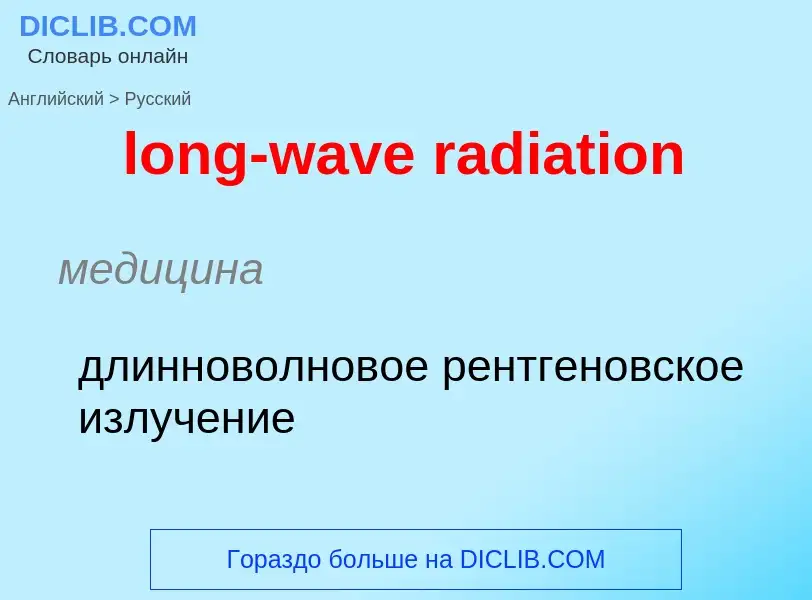Translation and analysis of words by ChatGPT artificial intelligence
On this page you can get a detailed analysis of a word or phrase, produced by the best artificial intelligence technology to date:
- how the word is used
- frequency of use
- it is used more often in oral or written speech
- word translation options
- usage examples (several phrases with translation)
- etymology
long-wave radiation - translation to russian
медицина
длинноволновое рентгеновское излучение
Definition
Wikipedia

In radio, longwave, long wave or long-wave, and commonly abbreviated LW, refers to parts of the radio spectrum with wavelengths longer than what was originally called the medium-wave broadcasting band. The term is historic, dating from the early 20th century, when the radio spectrum was considered to consist of longwave (LW), medium-wave (MW), and short-wave (SW) radio bands. Most modern radio systems and devices use wavelengths which would then have been considered 'ultra-short'.
In contemporary usage, the term longwave is not defined precisely, and its intended meaning varies. It may be used for radio wavelengths longer than 1,000 m i.e. frequencies up to 300 kilohertz (kHz), including the International Telecommunication Union's (ITU's) low frequency (LF, 30–300 kHz) and very low frequency (VLF, 3–30 kHz) bands. Sometimes the upper limit is taken to be higher than 300 kHz, but not above the start of the medium wave broadcast band at 520 kHz.
In Europe, Africa, and large parts of Asia (International Telecommunication Union Region 1), where a range of frequencies between 148.5 and 283.5 kHz is used for AM broadcasting in addition to the medium-wave band, the term longwave usually refers specifically to this broadcasting band, which falls wholly within the low frequency band of the radio spectrum (30–300 kHz). The "Longwave Club of America" (United States) is interested in "frequencies below the AM broadcast band" (i.e., all frequencies below 520 kHz).



![[[Electromagnetic spectrum]] with visible light highlighted [[Electromagnetic spectrum]] with visible light highlighted](https://commons.wikimedia.org/wiki/Special:FilePath/EM spectrumrevised.png?width=200)

![[[James Clerk Maxwell]] [[James Clerk Maxwell]]](https://commons.wikimedia.org/wiki/Special:FilePath/James Clerk Maxwell sitting.jpg?width=200)
